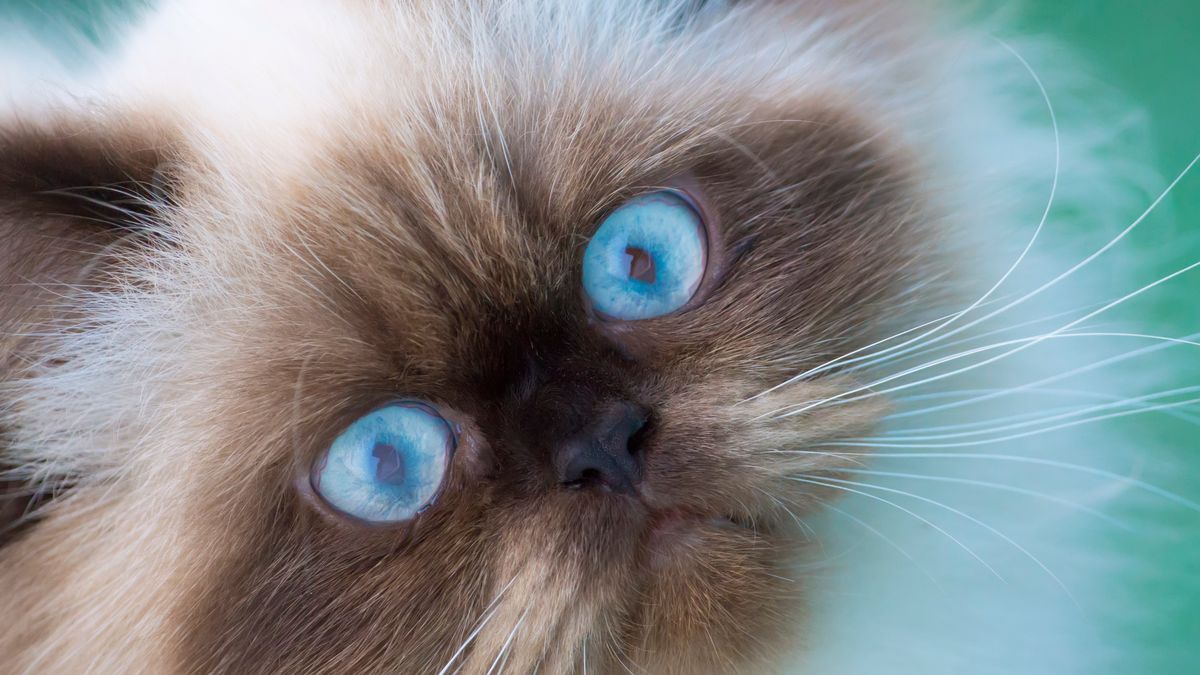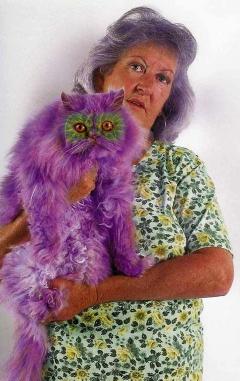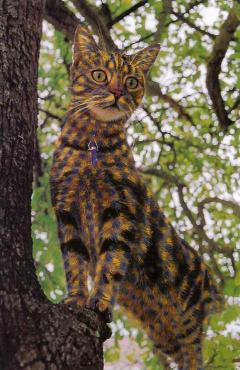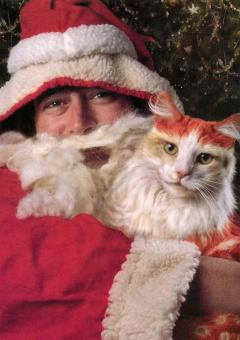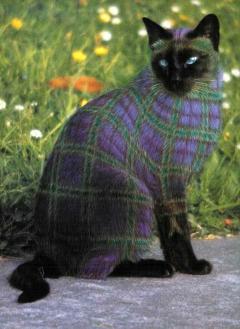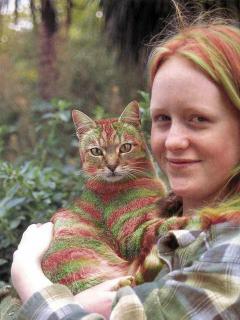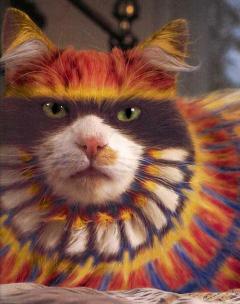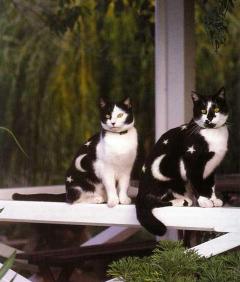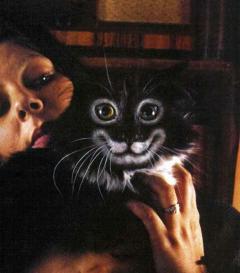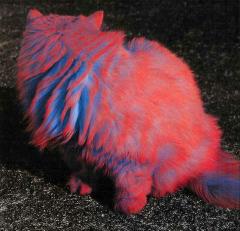Burton Silver and Heather Busch, authors of the 1994 coffee table book Why Cats Paint: A Theory of Feline Aesthetics, managed to pull off the double feat of creating a sly and hilarious send-up of both art books and cat books.
Example:
The book these came from said some of the paint jobs cost $15,000 and had to be repeated every 3 months as the cat's hair grows out. Must be nice to have $60,000 a year just to keep your cat painted!
As San Francisco Chronicle reviewer Jon Carroll observed in his review of the work at the time of its original release:
It seems to me that "Why Cats Paint" is likely to make $50 million. I made that figure up. But it has everything: Pictures of cats, paintings by cats, swell shiny pages, English-language text.
The people who will think it is serious (and there will be many such people, I guarantee you) will perhaps start a new religion. The people who think it is funny will have a lovely book that will endure on a coffee table forever.
"Why Cats Paint" is a sort of premptive strike of a title. It bypasses the crucial issue (Do cats paint?) and moves right to developing a theoretical construct about a phenomenon that has not yet gone through the formality of actually existing.
In "Why Cats Paint," we learn about Buster, whose inverted homages to Van Gogh led to the realization that, because cats often lie on their backs and look at things upside down, they freqently create paintings that are "upside down," to use the provincial term.
We learn about Charlie, the peripheral realist, whose acrylic on enamel (or, you might say, paint on refrigerator door) reminds us that, when cats seem to stare at nothing, they are actually using their peripheral vision to study the harmonic nature of color and form.
Finally, we learn about Radar, whose nocturnal arrangements of dead mice (often on stairways to create interesting spatial juxtapositions) inspired her owners to make a complete photographic record of her work ''including a video of kinetic installation in which a wingless dragonfly interacts with an almost lifeless
shrew — a disturbingly poignant work that at times borders on the profane.''The brains and brawn behind "Why Cats Paint" are Heather Busch and Burton Silver, who a few years ago gave us "Kokigami," the detailed exploration of the almost-real art of Japanese erotic paper sculpture.
Their pans are dead and perfectly composed; no hint of actual intention is allowed; all is surface. Well, perhaps one little hint. At the very front of the book is the notation: ''Why Cats Paint is a registered international experiment in inter-species morphic resonance and is designed to test the hypothesis of formative causation.''
In other words: If you describe a phenomenon, perhaps it will come to exist.
As Carroll predicted, a good many people did take Why Cats Paint at face value and failed to realize it was a spoof. The phenomenon was repeated with the 2002 release of Why Paint Cats: The Ethics of Feline
"Why Paint Cats" is an appropriate title for Ten Speed Press' book. Just add a question mark at the end. Why?
This book is a photo album of cats with brightly painted designs on their bodies and faces. The geometric designs are fascinating. Themes include Charlie Chaplin painted on a cat's
posterior — now that's whimsical. And the complex and symmetrical designs show there are no amateur artists here.Then you wonder if this is really computer imaging. It appears that
"artists" — 23 ofthem — have painted real, live cats.Or have they?
Based on authors Burton Silver and Heather Busch's previous book, "Why Cats Paint," one only can conclude that this book is a spoof, as well, and that no cats were directly involved.
The authors concocted elaborate stories about the cats, the people who supposedly own them and the "artists." One artist was reported to have lost his job at a grooming and painting service when he painted the wrong cat with a pig snout on its face and dyed its white body pink. He called his work Pigmylion, but the owners weren't pleased.
There are noble statements in the book, such as "the work has to benefit or upgrade cats in some way," and a disclaimer that "no cats were harmed during the making of this book."
Well, of course the cats weren't harmed. They were playing, sleeping, catching mice or doing whatever cats do while the real artist, Busch, was busy manipulating photographs of them with her computer.
Silver, who lives in New Zealand, will not admit that the illustrations were achieved through computer imaging. He said, via
"The book's purpose is not simply to show beautiful images of painted cats, but in so doing, to encourage ethical debate, thus the subtitle: 'The Ethics of Feline Aesthetics.'"
Using their vivid imaginations, the authors included such details as how the cats were painted, prices and even that the paint jobs needed to be retouched every two months. However, a few details they missed include an explanation of how the cats were kept still until the paint dried and what happens when the cat licks the paint job. Artists for the Ethical Treatment of Animals? Come on! You won't find them or any of the "artists" in the Internet.
Let's hope that people don't read the book, then try painting the family pet.
The joke lives on, as several photographs from the latter book were circulated via
